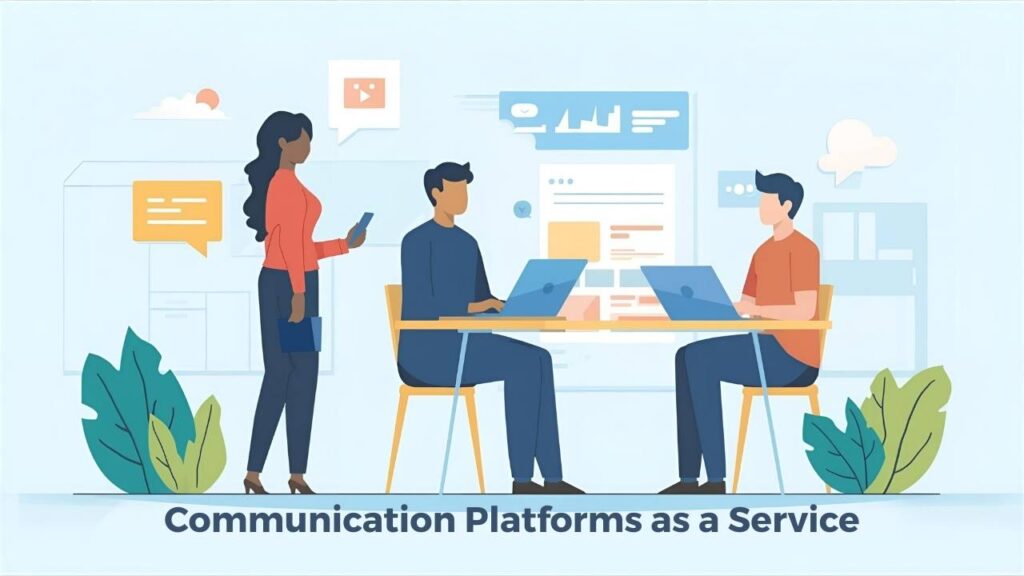Digitalization of business communications has gained significant pace, and Communication Platforms as a Service (CPaaS) have become the new core of customer engagement campaigns. CPaaS solutions provide enterprises with the ability to seamlessly integrate potential real-time communications within their applications and processes using straightforward APIs and circumvent the difficulty of infrastructure investment.
With the organization placing a greater emphasis on omnichannel customer experiences, automated communications, and scalable engagement solutions, tools such as CPaaS platforms have become the necessary resources for ensuring competitive brand advantage in the present digitally driven business environment, where every organization is in a rush to achieve with great speed.
The full assessment of the best 10 communication platforms as a service providers in the year 2025 is conducted on the preexisting essential criteria such as API quality and documentation, scalability and reliability, global reach and carrier coverage, pricing transparency, simple integration, security compliance, analytics, and overall developer experience. These platforms are the strongest and most cutting-edge solutions to use by businesses interested in improving their communication infrastructure and providing outstanding customer interactions through various channels.
What is CPaaS?
The CPaaS (Communication Platforms as a Service) is a cloud computing model that allows businesses to incorporate real-time functionality into their applications without maintaining backend systems in the form of voice, video, and messaging. CPaaS offers APIs and SDKs in order to incorporate them into the existing infrastructure quickly.
The major elements are programmable voice, SMS/MMS, video calls, chat, email, push notifications, and authentication services. In contrast to UCaaS, where its end-users operate on a full-featured communication tool, CPaaS is the set of building blocks that enables developers to develop custom communication experiences.
Some of the most common use cases are custom messaging, appointment reminders, live support, order status, telemedicine, transaction alerts, fraud detection, marketing, and emergent notifications.
Key Features to Look for in a Communication Platforms as a Service Providers
Multi-channel support
CPaaS platforms will allow businesses to provide customer experiences through communications such as SMS, voice, video, chat, and email, as well as emerging services, both internally and externally using WhatsApp Business API and RCS to provide the same experience regardless of how they communicate.
Developer-friendly APIs and SDKs
The best platforms have friendly RESTful APIs, well-documented APIs, sample code, test environments, and SDKs in iOS, Android, JavaScript, Python, and PHP, thus it becomes easier and quicker to integrate.
Scalability and reliability
CPaaS at the enterprise level should be able to manage traffic surges and ensure 99.9+% availability, as well as provide such options as global load balancing, redundancy, and automatic failover to maintain a steady flow.
Global carrier connectivity
High-quality CPaaS vendors have an established connection with local telecom carriers in the countries they need to be delivered to, making the global delivery dependable and cheaper compared to an average vendor and very reassuring in terms of local regulations and pricing.
Security and Compliance
The major platforms offer end-to-end encryption, secure transmission, data residencies, role-based access, GDPR, HIPAA, PCI DSS, and SOC 2 compliance.
Analytics and Reporting
It has all the main analytics capabilities with real-time dashboards, delivery reports, engagement metrics, cost analysis, and other advanced analytics features such as sentiment analysis and predictive modeling.
Integration capabilities
The most efficient CPaaS platforms are capable of easy integration with CRM, such as Salesforce and HubSpot, contact centers, marketing platforms, and e-commerce platforms, and support webhooks and event notifications in real-time.
10 Best Communication Platforms as a Service in 2025
1. Twilio
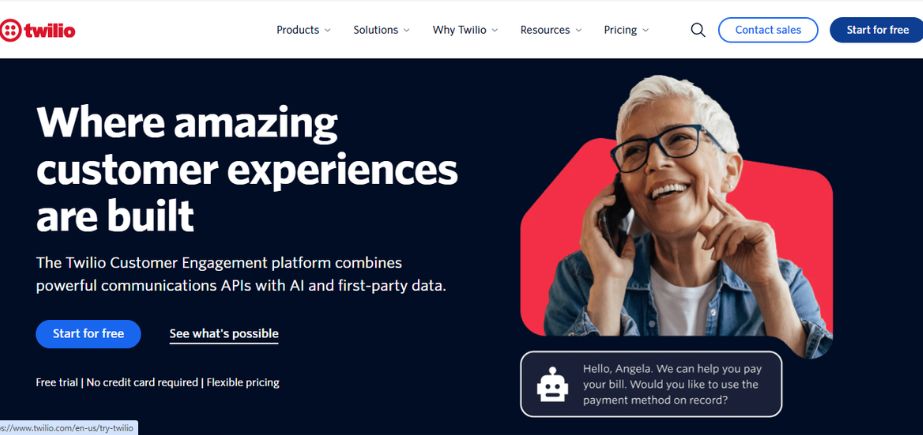
The Twilio platform is the biggest CPaaS platform with an extended set of communication APIs and a vast community of developers. Offering support to voice, messaging, video, email, and authentication services in 180+ countries, Twilio stands out in the quality of its API design and documentation. The platform is used by businesses, ranging in size and scope to startups and enterprises, that use innovative products, including Twilio Flex contact centers and Segment customer data platforms.
Twilio uses pay-as-you-go pricing and transparent costs so that each component of its communication can be experimented with and used cost-effectively when needed to scale. Recent upgrades concern AI functionalities, an enhanced WhatsApp Business API, and high-level customer conversation analytics.
Key Features:
- Programmable Voice, SMS, Video, Email APIs
- Twilio Flex Contact Center Platform
- SendGrid Email Marketing Integration
- Authy Two-Factor Authentication
- Segment Customer Data Platform
Pros:
- Exceptional developer experience and documentation
- Largest ecosystem with extensive third-party integrations
Cons:
- Can become expensive at high volumes
- Complex pricing structure for enterprise features
Website:
https://www.twilio.com
2. Vonage Communications APIs
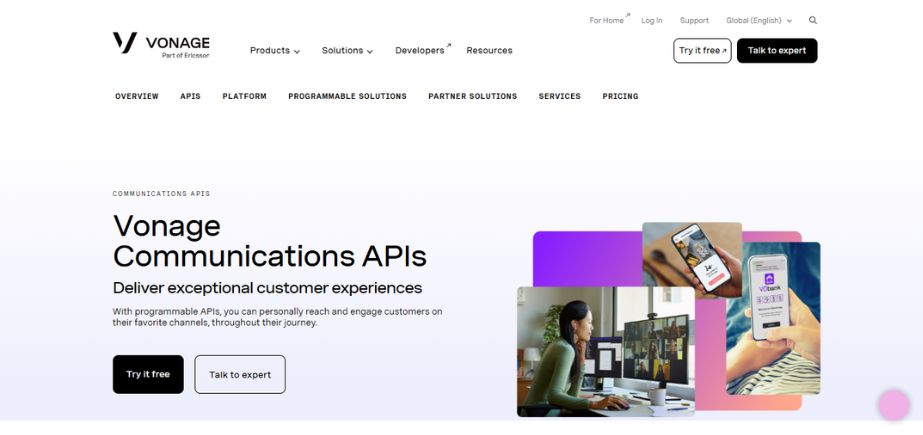
The solution of Vonage Communications APIs (previously Nexmo) provides powerful CPaaS services, including top-quality messaging and voice opportunities on a global basis. The platform provides complete APIs on SMS, MMS, voice, video, and verification solutions with the best message delivery rates and competitive international prices.
Vonage performs well in enterprise applications that need massive communications and global connectivity due to excellent global carrier networks. Their Conversation API makes it easy to carry out omnichannel messaging, whereas their Number Insight API gives phone insights on the prevention of fraud. The recent enhancements have been the creation of better video features and blast security as well as CRM integrations to provide complete business communication.
Key Features:
- Messages API for SMS/MMS/WhatsApp
- Voice API with global coverage
- Video API for real-time communications
- Verify API for authentication
- Number Insight for phone validation
Pros:
- Excellent global message delivery rates
- Competitive international pricing structure
Cons:
- Limited advanced features compared to Twilio
- Smaller developer community and resources
Website:
https://www.vonage.com/communications-apis
3. Sinch
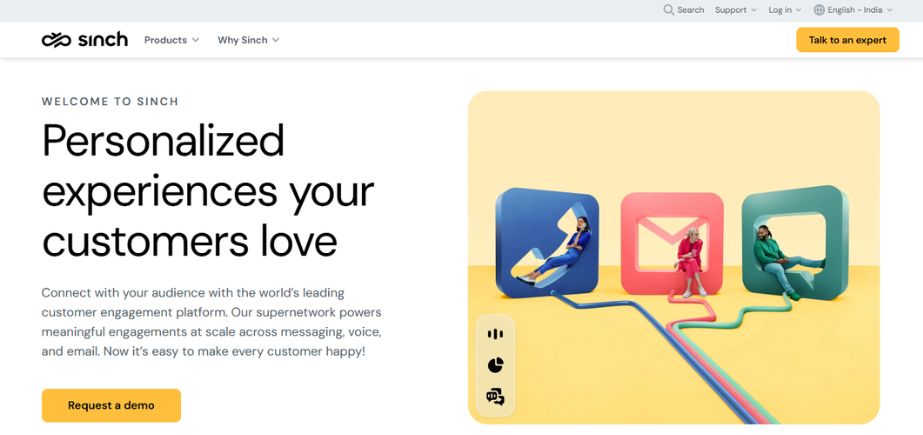
Sinch has become one of the greatest communication platforms as a service providers having a global presence with innovative solutions to messaging in 190+ countries. The platform has complete APIs in SMS, voice, video, and email with specific knowledge of customer engagements and mobile messaging. The Conversation API offered by Sinch facilitates such omnichannel messaging on WhatsApp, Viber, and RCS.
Sinch has diversified its area of service through several strategic purchases involving video calling, phony verification, and customer information-processing platforms. The platform is used mainly in enterprise environments that need to be global, message a lot, and have heavy customer engagement with competitive transparent pricing.
Key Features:
- Conversation API for omnichannel messaging
- SMS, Voice, and Video APIs
- Verification and Number Lookup
- Email API integration
- WhatsApp Business API
Pros:
- Strong global coverage with local presence
- Innovative omnichannel messaging solutions
Cons:
- Less comprehensive developer resources
- Pricing can be complex for multi-channel usage
Website:
sinch.com
4. Bandwidth
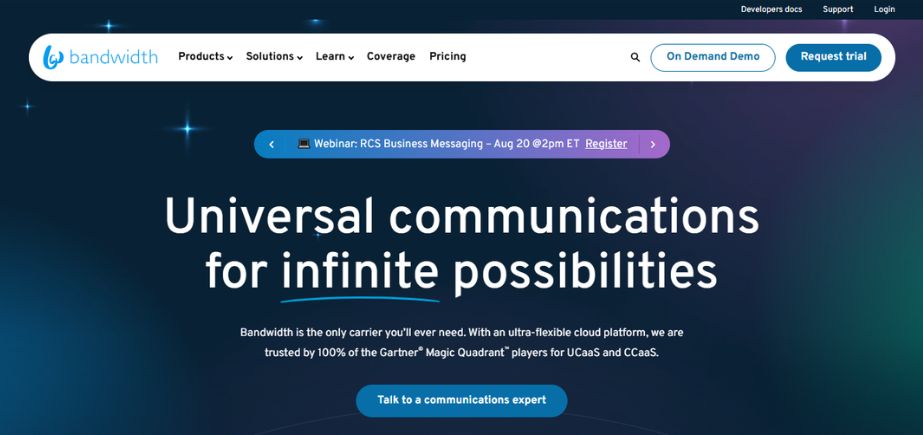
Bandwidth stands out as a telecommunications carrier alongside a CPaaS provider featuring expertise and intimate understanding of infrastructure, as well as owning a network. The platform provides voice, messaging, and emergency services APIs that deal with top-level call quality and dependability. Being a carrier-CPaaS hybrid, Bandwidth offers even greater pricing control and quality as it does not represent a middleman markup.
Their advantages are that they have outstanding voice quality, a complete 911 emergency solution, transparent pricing, and a robust compliance solution. The platform is best suited to businesses that need high-quality voice services as well as regulated environments that need an effective compliance framework with carrier-grade infrastructure strength.
Key Features:
- Voice API with carrier-grade quality
- Messaging API (SMS/MMS)
- Emergency Services (911) API
- Phone Number Management
- WebRTC integration capabilities
Pros:
- Owns telecommunications infrastructure for quality control
- Transparent pricing without carrier markups
Cons:
- Limited international coverage compared to competitors
- Fewer advanced features and integrations
Website:
https://www.bandwidth.com
5. Infobip
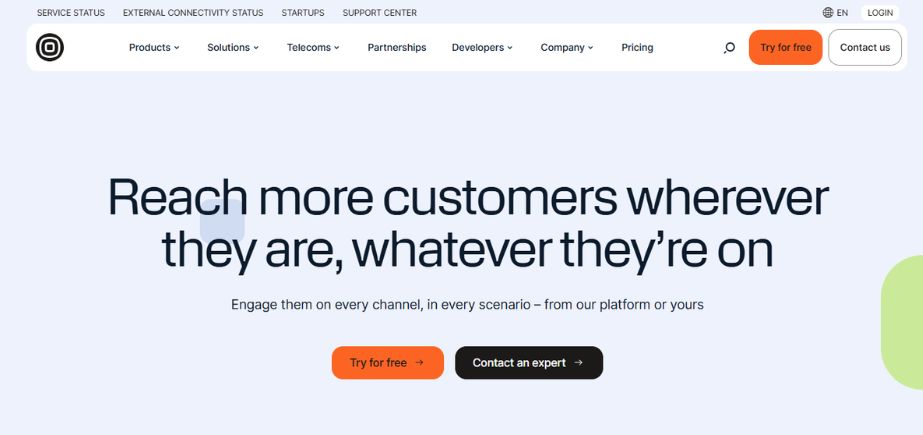
Infobip is one of the largest international CPaaS providers, having an exceptionally strong presence in 190+ countries and 70+ local offices globally. The platform provides full-service communication APIs such as SMS/voice/email/push notification and chatbot service via direct carrier interconnections that feature high rates of message deliveries. Infobip is a global leader in large-scale messaging, personalized customer outreach, and cross-channel marketing automation.
Their Conversations software allows them to take care of customers. communications through various outlets using a single interface. Potential recent innovations are powered by artificial intelligence, more advanced personalization capabilities, and advanced analytics, which help it to be especially strong in emerging markets where there is local regulatory experience.
Key Features:
- SMS, Voice, Email, and Push APIs
- Conversations omnichannel platform
- WhatsApp Business API
- Chatbot and AI solutions
- Advanced personalization engine
Pros:
- Excellent global coverage with local market expertise
- Superior message delivery rates worldwide
Cons:
- Can be expensive for small-scale usage
- Complex feature set may overwhelm simple use cases
Website:
https://www.infobip.com
6. MessageBird
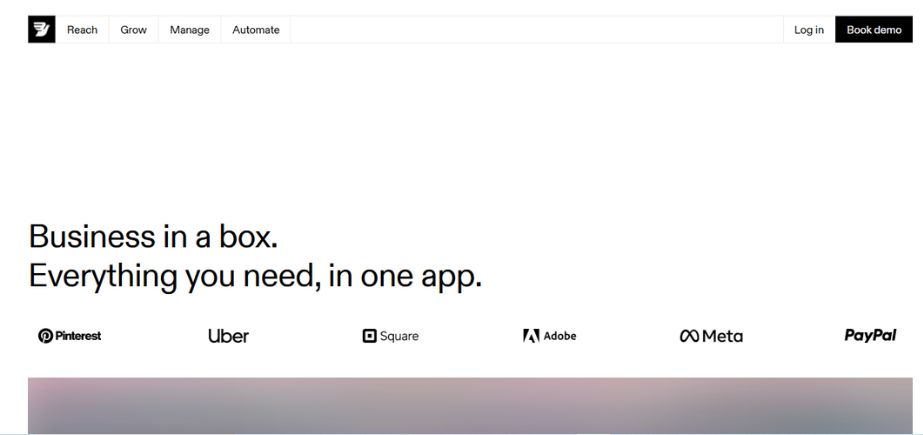
The company MessageBird offers state-of-the-art CPaaS services deeply equipped with customer experience-related capabilities and omnichannel platforms serving both European and Asian markets. The platform has unified customer engagement features, and it provides APIs to SMS, voice, email, push notification, and live chat.
MessageBird is an API-first company offering both communication APIs and contact center features via their Inbox product to manage conversations on various channels. The platform focuses on superb developer experience, easy-to-use APIs, rich documentation, and robust GDPR compliance. The new changes are improved automation of customer service based on AI and better integration of business tools.
Key Features:
- Omnichannel messaging APIs
- Inbox unified conversation management
- Voice and Video calling APIs
- Push notifications and email
- WhatsApp Business integration
Pros:
- Strong European market presence with GDPR compliance
- Unified customer engagement platform approach
Cons:
- Limited global coverage compared to larger competitors
- Fewer enterprise-grade features and scalability options
Website:
https://www.messagebird.com
7. 8×8 CPaaS
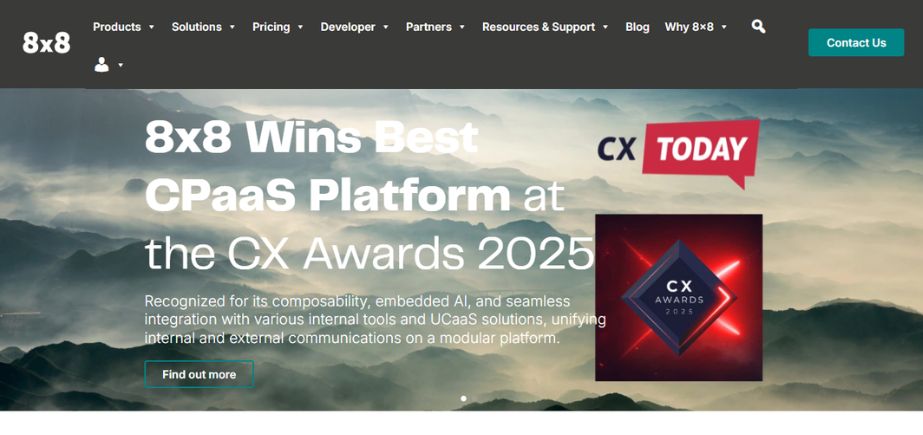
8×8 CPaaS, as a platform based on extensive expertise in telecommunications, would supply quality-based, reliable, and secure communication APIs to companies that only need enterprise-level solutions. It provides voice, messaging, and video APIs with established Fortune 500 customer credentials and full compliance certifications such as HIPAA and SOC 2. 8×8 is noted as having strong customer support, professional services, and ease of integration with its larger unified communications platform.
The stage is appropriate for those enterprises with high demands of reliability, those enterprises that need support in terms of compliance, and those organizations that need professional support in terms of implementation. The more recent improvements are the accessibility of better API documentation, security abilities, and CRM connections.
Key Features:
- Voice, SMS, and Video APIs
- Enterprise-grade security and compliance
- Professional services and support
- UC platform integration
- Global network infrastructure
Pros:
- Proven enterprise credentials with Fortune 500 customers
- Comprehensive compliance and security certifications
Cons:
- Higher pricing compared to startup-focused platforms
- Less flexible for small business requirements
Website:
https://www.8×8.com/products/apis
8. Plivo
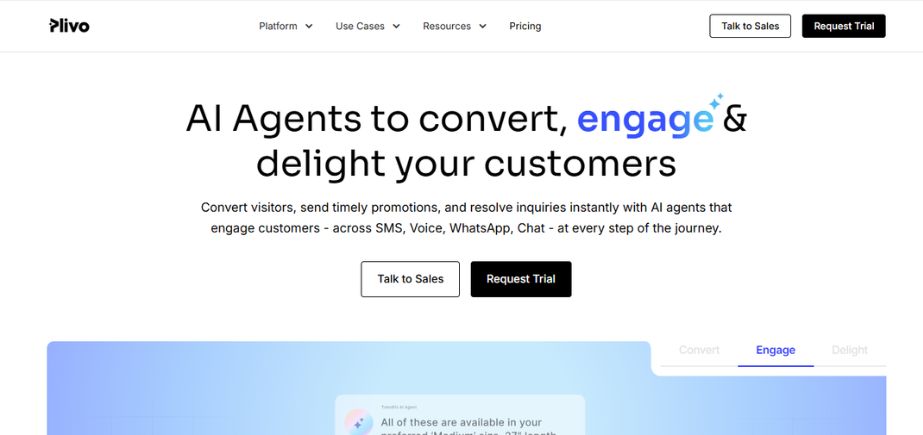
Plivo offers API-first voice and SMS CPaaS solutions that are simple, reliable, and cost-effective. The platform provides clean APIs made of straightforward implementation, excellent documentation, and pricing that does not have any hidden costs. The voice API offered by Plivo features call recording, conferencing, and intelligent routing, and their SMS API covers the entire world, offering comprehensive reporting on deliveries.
The platform can support the needs of developers looking to use easy integration methods, startups that want to use affordable methods to integrate services, and companies that want stability in voice and SMS sending. The latest changes concern security enhancement, new analytics, and international coverage.
Key Features:
- Voice API with call recording and conferencing
- SMS API with global coverage
- SIP trunking capabilities
- Call analytics and reporting
- Multiple programming language SDKs
Pros:
- Transparent pricing without hidden fees
- Simple, developer-friendly API design
Cons:
- Limited advanced features compared to comprehensive platforms
- Smaller ecosystem and fewer integrations
Website:
https://www.plivo.com
9. Kaleyra
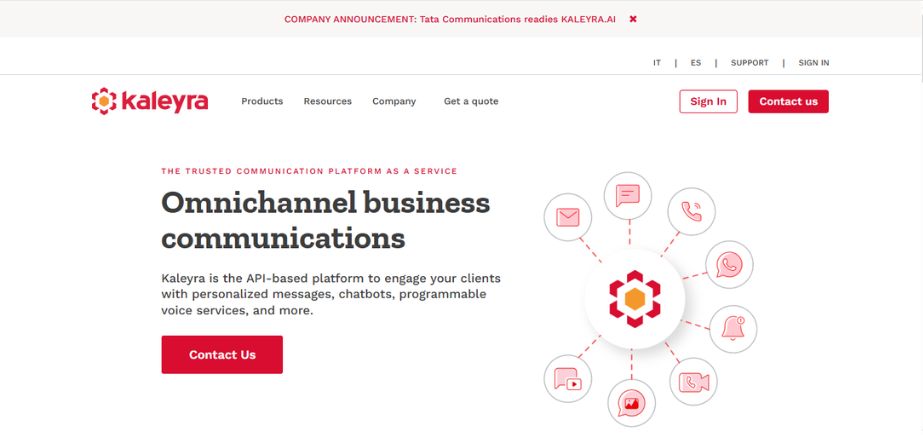
Kaleyra is a leading global CPaaS provider offering end-to-end flexible solutions with a mobile-first philosophy of communication in 190+ countries. Its platform offers APIs for SMS, voice, email, push, and WhatsApp Business with specific dominance in ACE markets and on mobile messaging. The distinctive features of Kaleyra are widespread direct carrier links, domestic regulatory knowledge, inventive RCS messaging services, and advantageous adjustable costs.
They have joined contact center functionality with communication APIs in their Hybrid Cloud Contact Center. The recent features that have been added include optimization of AI abilities, analytics, increasing WhatsApp Business API functions, and increasing integration alternatives of the CRM system.
Key Features:
- SMS, Voice, Email, and Push APIs
- WhatsApp Business API integration
- RCS messaging capabilities
- HyBrid Cloud Contact Center
- AI-powered customer engagement
Pros:
- Strong presence in emerging markets with local expertise
- Comprehensive mobile-first communication solutions
Cons:
- Less established in North American markets
- Documentation and support primarily in select languages
Website:
kalyera.com
10. Telnyx
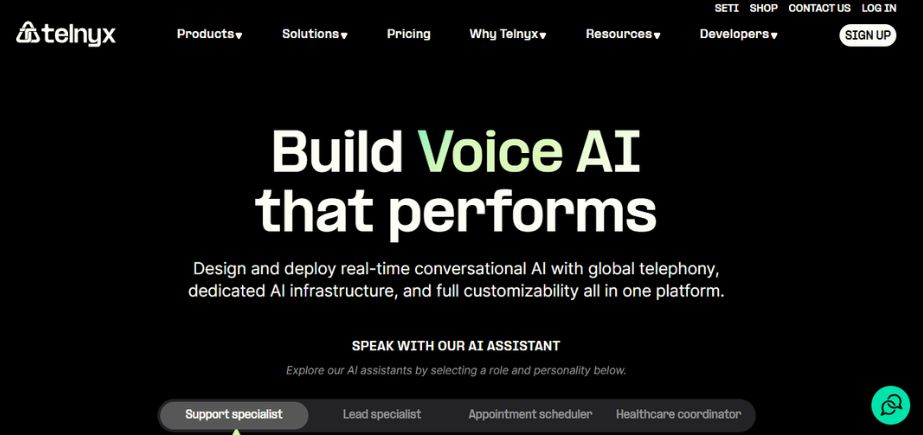
Telnyx is the next-generation CPaaS, which specializes in real-time communications and global ownership of infrastructure. The platform provides voice, messages, fax, and networking APIs with low latencies, high quality, and clear pricing without markups. Telnyx has a worldwide telecommunications infrastructure that guarantees quality control and innovative real-time features, such as WebRTC and SIP trunking.
Their Mission Control portal is a portal that has full management and analytics in tracking the performance and cost of communication. New developments in recent times are improved video APIs, broadened geographical coverage, support of STIR/SHAKEN, and improved development framework integrations that make it enticing to offer high-quality, low-cost communication services.
Key Features:
- Voice, SMS, and Fax APIs
- WebRTC and SIP trunking
- Programmable networking capabilities
- Mission Control management portal
- Global private network infrastructure
Pros:
- Owns global infrastructure ensuring quality and cost control
- Innovative real-time communication capabilities
Cons:
- Newer platform with smaller customer base
- Limited enterprise support and professional services
Website:
https://telnyx.com
How to Choose the Right Communication Platforms as a Service for Your Business
1. Business size & needs: Cost-saving, simple-to-apply solutions, such as Plivo or MessageBird, are usually considered by startups. Bigger organizations value extensibility and feature-rich platforms such as Twilio or Vonage.
2. Channel requirements: Companies that use SMS or voice as their primary channel need to look at Bandwidth or Telnyx to have the option of improved pricing and better call quality. Infobip and Sinch should be used by those that require features of omnichannel, such as WhatsApp or RCS.
3. Geographic coverage: Presence on platforms that are locally strong will guarantee their delivery and support. Infobip and Kaleyra are powerful in the emerging markets, and MessageBird has great European coverage and GDPR compliance.
4. Developer resources & support: Platforms are preferably highly documented and offer services to teams with low technical capability, and 8×8 CPaaS has excellent support, and Twilio is strong in connecting with other developers and helping communities.
5. Scalability: Evaluate such infrastructure services as load balancing and failover and dynamic pricing. Ensure the platform supports future growth without becoming cost-prohibitive.
6. Reliability: Review SLAs, uptime history, and disaster recovery capabilities. Bandwidth and Telnyx offer better reliability through infrastructure ownership.
7. Customer support: Give attention to quality of support, level of availability, time zone coverage, and technical skills. This is crucial for complex deployments and critical operations.
8. Cost evaluation: Expand the pricing beyond simple pricing into integration, maintenance, and total cost of ownership. On one hand, there are clear pricing platforms, and on the other hand, some of them are supported with the improvement of the services.
9. Pilot testing: It is always best to start with a trial with free credits that would allow you to test APIs, documentation, and integration on a smaller scale. Gradually expand once performance and usability are validated.
Future Trends in Communication Platforms as a Service
The CPaaS (Communications Platform as a Service) market is fast changing to more than simple messaging and voice applications. New technologies are boosting platform operations, which allows companies to provide more and smarter, safe, and personalized customer experiences. Below are key trends shaping the future of CPaaS:
- AI integration in CPaaS: CPaaS is evolving into intelligent ways of engaging people with the help of artificial intelligence. Chatbots improve the automatic support offered in the AI form, NLP (natural language processing), as well as sentiment analysis to increase the intelligent anticipation of customers.
- Conversational AI and voice assistants: Conversational AI and voice assistants are becoming standard, assisting businesses in providing a more human and familiar communication experience with the use of a CPaaS platform.
- Machine learning optimization: Machine learning enhances engagement by achieving the right timing to deliver the message, the appropriate communication channel to be used, and personalized content to make customers.
- Adoption of Rich Communication Services (RCS): RCS supports such features as media sharing, call-to-action buttons, and branded messaging on classic messaging apps. CPaaS providers are moving to RCS to fill the gap between SMS and rich app-based expression.
- Enhanced security measures: Additional security options including biometric verification, blockchain verification, and encryption, are being incorporated. Audit trail, zero-trust, and regulatory compliance capabilities are being incorporated into CPaaS to ensure the protection of sensitive data.
- CRM and CDP integration: CPaaS is also becoming part of the CDP-CRM ecosystem to enable real-time insight, personalized messaging, and the summative observation of customer journeys at multiple touchpoints.
- Edge computing for real-time communication: Edge computing reduces latency by processing data near end-users. It is essential to real-time capabilities such as video calls and IoT use cases, as it increases speed and reliability regardless of location.
Conclusion
The modern world of customer engagement depends on Communication Platforms as a Service as organizations have transitioned to a more complete API integration to drive business communication. The platforms that will be compared in this analysis are the most innovative and stable solutions by the year 2025 that share the characteristics of having definite strengths and abilities that appeal to different business needs and applications.
Your final choice of CPaaS platform will boil down to how you intend to run your business, your technical demands, geographic coverage requirements, and expansion goals.
Regardless of what you value more about platform developing experience and global coverage, affordable and transparent pricing, or feature-richness, there will be one of these top 10 that will fit your needs and promote the chosen communication strategy.
Because more businesses focus on providing customer experiences and participating in digital engagement, CPaaS platforms will prove to be necessary to sustain competitive advantages and offer outstanding customer services. The trick is that it is essential to assure yourself of the analysis of requirements, the comprehensive testing of possible solutions, and the selection of a platform that would satisfy not only your needs but could change and grow with your business throughout the years.
Monitor new trends and make new capacities to stay with the current development of the CPaaS marketplace, which is quickly changing due to the development of artificial intelligence, the transformation of customer preferences, and the digital revolution in business communication. The investment today in the correct CPaaS platform will continue to pay off in higher customer engagement, efficiency, and growth of business years later.
FAQs
1. What is Communication Platforms as a Service (CPaaS)?
Communications Platform as a Service, abbreviated as CPaaS, is a cloud-based service enabling companies to quickly and easily communicate in real-time with APIs through voice, video, messaging, and authentication.
2. How does CPaaS work?
CPaaS enables the developers to use APIs and SDKs, helping to integrate the communication features directly within the software, without a need to construct the backend infrastructure. It performs complicated processes such as call routing, message protocols, and international connectivity.
3. What are the key features of CPaaS?
Typical applications are SMS and MMS messaging, voice calls, video conferencing, chatbots, authentication (e.g., OTP), omnichannel messaging (e.g., WhatsApp, Facebook Messenger), and analytics tools.
4. Who uses CPaaS?
Businesses of all sizes, ranging to small-scale, employ CPaaS to deliver marketing messages to retailers, secure authentication to banks, telemedicine to healthcare providers, and automate customer service calls by staff.
5. What are the benefits of using Communication Platforms as a Service (CPaaS)?
Advantages are that the communication tools can be deployed quicker, the cost of infrastructure is reduced, the customer engagement will be better, real-time interaction is available, and scaling up and scaling down is feasible.
